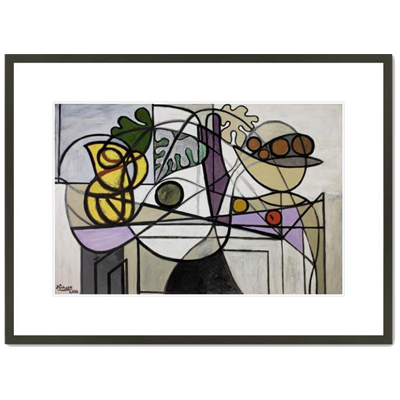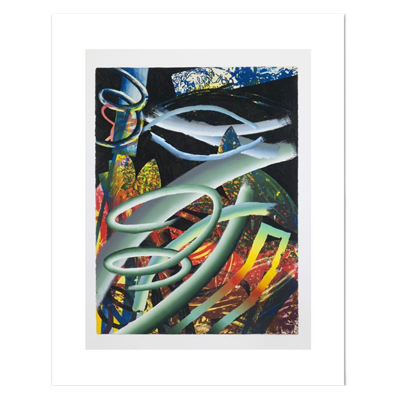Description
A pitcher, a philodendron plant, and a basket of fruit rest on a mantelpiece and are bound together by sweeping black lines. Pablo Picasso often invested his still lifes with secret meanings, and this work is a disguised portrait of his young and voluptuous lover, Marie-Thérèse Walter. The pitcher is painted in the brilliant yellow often used to represent Marie-Thérèse’s hair while the green apple suggests the form of her breast and the curling black lines refer to the contours of her body.
Picasso explored many subjects in refining his engagement with the Cubist compositional methods he had forged at the beginning of the twentieth century. He frequently used traditional art-historical subjects as vehicles for his highly innovative treatments. In the early 1930s, while living in the town of Boisgeloup outside Paris, he painted a series of large still lifes, executed with curving lines that intersect to both suggest the forms of the objects and fracture them, much like traditional Cubist compositions.
With this work, however, Picasso was less interested in precise analysis of forms in space than in creating a rhythmic, decorative painting. Against the pale white and off-white of the background, the purple, green, and red areas, as well as the heavy black lines, evoke stained glass. The textured application of paint calls additional attention to the lively surface. Nevertheless, Picasso’s overall treatment of the lush colors suggests the still life’s sensuousness in a restrained fashion, as the vivid colors on one hand and the linearity of forms on the other create a compositional balance.
Approximate Measurements
Overall Frame Size: 41.50″ W x 30.10″ H
Image Size: 34.00″ W x 22.60″ H
Mat Width: 2.50″
Moulding Width: 1.1875″

